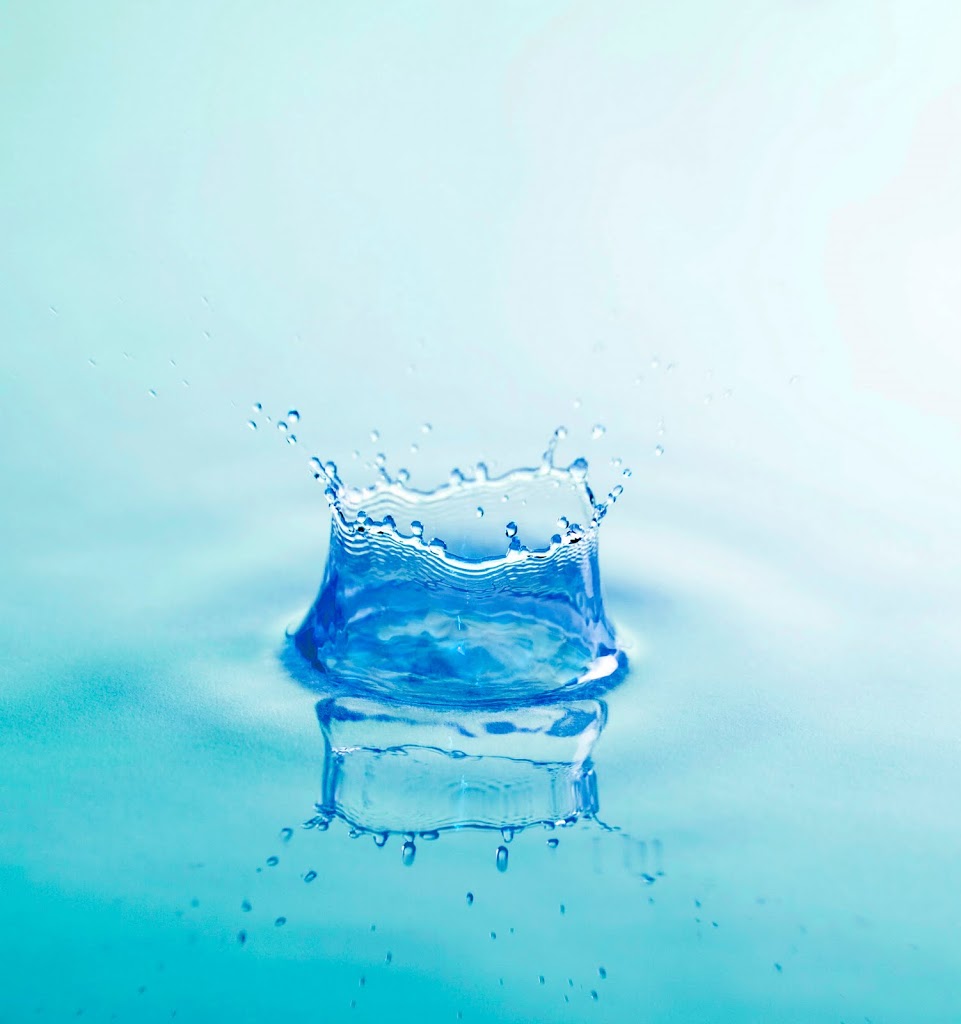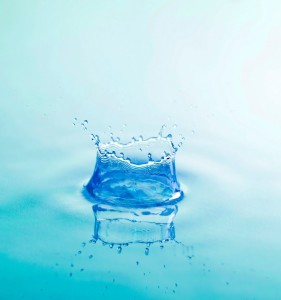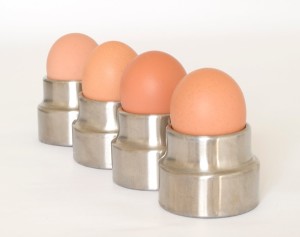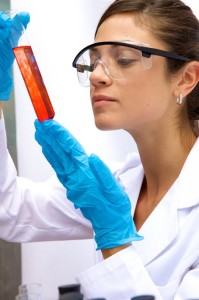
by theglamscientist | | Cosmetic Ingredients Review, cosmetics, hair conditioning, moisturizer, moisturizing, occlusive agents, skin conditioning, water |

A few weeks ago, I saw a tweet that baffled me a bit. Someone (I don’t remember who) was completely annoyed that the top ingredient in some product was water. My first thought was “Whoa, what’s wrong with water?!” More recently, I read about a product line whose claim to fame is “water-free”. From a formulator’s perspective, water can be a nuisance when you are trying to avoid the use of preservatives. That is a big deal in times like these where the natural, eco and organic movement is in full effect. I’m still not clear why consumers would be up in arms about the presence of water in a formula, but I’m here to tell you why you should love it.
Water is THE ultimate moisturizer. Moisture cannot exist if water is not present, so the primary function of water in a moisturizing product is to be the source of moisture. In a perfect world, water would be all we need to maintain well moisturized skin and hair, but that’s just not the way it is. Because water will always evaporate, there needs to be ingredients in a product that act as a barrier to prevent water loss. These barrier (occlusive) ingredients are waxes, vegetable oils and silicone oils. As a bonus, most barrier ingredients come with added benefits like vitamins, minerals, essential fatty acids, etc.
Another main function of water in a cosmetic formula is to be a solvent. Not only are raw materials concentrated, but they also need a medium to be dispersed. Water dissolves these raw materials and allows them to be used in safe concentrations. [While many raw materials can be used as is, they are equally effective in lesser concentrations.] I fear that some people think water as a top ingredient makes the product “watered down” or ineffective. That couldn’t be further from the truth. Consider the amount of laundry detergent you use in relation to the amount of water the fills the washer. The ratio of detergent to water is clearly 1 to 99 yet, you have full confidence that the minute amount of detergent you used will clean your clothes. The same concept applies to water in cosmetics.
Finally, water plays a major role in the texture of a product. Moisturizers and hair conditioners, for instance, benefit from easier application, spreadability (hmmm is that a word?) etc when water is used effectively. Water as a main ingredient can also be indicative of a lighter formula.
Contrary to popular belief, all skin types and hair types need moisture. So the next time you see water as a top ingredient, be thankful that the formulator thought about your need for moisture. Pay closer attention to the types of oils the product uses to lock that moisture in… dry skin and hair will need heavier oils and oily skin will need much lighter oils.
Are you a consumer that’s not big on water in cosmetics? How do you feel about it now?
by theglamscientist | | brazilian keratin treatment, formaldehyde, keratin, nail hardener, nail polish |

I had the pleasure of attending America’s Beauty Show and FACE and BODY in Chicago a couple weekends ago. I had a blast! While I was there, I engaged in an interesting conversation with someone regarding formaldehyde. The conversation was spun from the fact there are now at least 10-15 different Brazilian/keratin hair straightening products and one main ingredient is formaldehyde. So the question was: Why is formaldehyde in cosmetics and why would anyone put it there?
Brazilian Keratin Treatments
I can guarantee you that your hair will not be blown straight just from keratin. We’ve discussed keratin a bit before, but let’s revisit briefly. Keratin is a major protein in skin, hair, nails and teeth. Keratin in the skin is flexible and soft, yet it is hard in hair, nails and teeth. Although the keratin in the straightening treatment does not do the straightening, it does improve the strength and appearance of the hair. I’m reluctant to also say it improves the overall health of the hair because technically hair outside of the follicle is “dead”… but you get my drift. Formaldehyde (in keratin treatments that contain it), is the ingredient that causes the hair to relax. There are keratin treatments that do not use formaldehyde as the straightening agent, however keratin is certainly not the ingredient doing the grunt work. Let’s face it, a keratin treatment is a lot more marketable than a formaldehyde treatment :-/
Formaldehyde in other cosmetics
In most other cosmetic applications, formaldehyde is not added directly to the formula. Instead, it is a by-product, so to speak, that increases the effectiveness of certain preservatives. These preservatives work because they release small amounts of formaldehyde over time. [Think: formaldehyde = embalming fluid = preservative] This slow release of formaldehyde means that a product has an ongoing stream of protection from harmful microbes and bacteria. One cosmetic that uses formaldehyde directly is/was nail polish. Formaldehyde is used in nail hardening polishes, not really in the polishes that are more for show than functionality. When you see nail polishes that claim formaldehyde and formaldehyde resin FREE it’s largely due to marketability as opposed to an actual difference in the product formula.
Dangers of Formaldehyde
Formaldehyde is certainly a dangerous chemical, but not so much in cosmetics. The FDA has approved the use of formaldehyde in cosmetic applications for hair and skin at no more than 0.2 percent of a formula. Products that contain formaldehyde releasing preservatives have no problem meeting this restriction. Formaldehyde in nail polish products can lawfully be present at 5% of the formula. Studies show most nail hardeners that contain formaldehyde come in well below 5%. Unfortunately, there have been some keratin treatments that have been found to contain 10 times the legal amount of formaldehyde.
When inhaled, formaldehyde can cause respiratory irritation like a burning sensation in the nose and throat. It can also cause sensitivity in the eyes. When I was in undergrad, I worked with formaldehyde (formalin) in large quantities daily. I can say from experience that acute formaldehyde exposure is no joke! Long term inhalation of formaldehyde has been linked to some forms of nasal and lung cancer… and therein lies the problem.
While formaldehyde is not inhaled when from products that use formaldehyde releasing preservatives, it can be inhaled from nail applications and the controversial keratin treatments. From the perspective of both a scientist and a consumer, nail hardeners do not cause me any worry… but the unregulated amounts of formaldehyde in keratin treatments paired with high temps used to make the treatment work cause me great concern.
and with that… Be Glam responsibly!
by theglamscientist | | beauty, fave's, Glam Life |
I realized today that I don’t know much about my readers, and my readers may not know much about me. Even on Twitter it surprises me how many people have no idea what I do. I clearly need to toot my own horn a bit more. Nevertheless, this post is dedicated to giving you a closer look at my life… as it relates to beauty… and you doing the same.
So a little about me… You already know I’m a cosmetic chemist. I do contract work and consulting for small businesses, spas/salons and independent beauty professionals who want to market a line of beauty products. Manicurists and Makeup Artists have been my best clients so far. I also do private labeling and wholesaling. The product offerings for those services is growing gradually.
I am vain in the sense that I take pride in the way I look. I’m not the “I know I’m prettier than you” type. I just like to look pretty and I easily recognize and appreciate beauty in other women too. I am the QUEEN of complimenting a stranger 🙂 I’m obsessive about taking care of my hair and my skin. I spare no expense for hair care and skin care… especially when a product no longer works for me. I don’t think I’m a true product junkie, but that’s probably only because I can read an ingredients list and instantly know if a product will live up to it’s claims. My fave beauty products to buy are lip gloss and nail polish. I keep approximately 5 lip glosses in my purse not including the lip balm and carmex that I tote around. I buy nail polish compulsively, yet I rarely have my nails polished because of the work that I do. I also enjoy perfume… I wear it more for the status. It makes me feel all glamorous and grown up. I create perfume because I enjoy the process and because I can be inspired by so many different things that lead to creating a beautiful perfume.
So that’s enough about me. I want to know about you! Tell me, what’s your favorite nail polish brand? What nail color is an absolute classic in your eyes? What’s the best top coat and base coat? What beauty product or types of products excite you? How often do you wear perfume? What’s your signature fragrance? Are you obsessed with lip gloss like me? How long do you wish your lip gloss would last? Do you wear bronzer, foundation or tinted moisturizer? What’s your fave makeup brand? Are you into color or are you a neutral gal? When you pamper yourself, what does that include?
I want to hear it all, ladies! So, please leave a comment telling me all about your Glam Life 🙂

by theglamscientist | | Amino acids, cosmeceuticals, hair cycle, hair growth, health food, healthy hair, proteins |

I’m going to tell you ladies a secret… are you ready? Here it goes: One night while I was asleep, my son decided to rest his bottle in my hair. I woke up with a mane full of formula! I know what you’re thinking… “That is so gross!” “I hope you washed your hair immediately” The answers– “Not really all that gross.” “I washed my hair, eventually.”
Allow me to explain. My son suffers from multiple food allergies– milk and soy included. So instead of drinking the typical milk based formula, cow’s milk or soy milk, he drinks a hypoallergenic formula made solely of amino acids. It comes in powder form and I mix it with water. In essence, I had a fantastic conditioning treatment in my hair! Plus it’s tropical flavor, so it smells good too. If you’ll recall from your high school science classes, amino acids are the building blocks of proteins… and hair is made of a fibrous protein better known as keratin. Put simply, amino acids are hair food.
Amino acids combine to form proteins that will strengthen the hair and possibly help promote hair growth. Keep in mind, everyone’s hair growth cycle is different. You can’t grow waist length hair if that’s not in your DNA. See previous post Long, Luxurious Hair: The Science. Fortunately, you don’t have to have a formula incident to reap the benefits of amino acids and/or proteins. The claim to fame for those mayonnaise and egg kitchen conditioning treatments is the fact that they are rich in proteins, thus also rich in amino acids.
These days, cosmeceuticals are growing in popularity. They are no more than a collection of vitamins, minerals, etc that can be taken in pill form or have been packed into special beauty drinks. I’m all for cosmeceuticals– anything to keep it pretty. Just remember that you can add the same vitamins, minerals, essential fatty acids, etc to your diet just by incorporating the right foods. Amino acids are included in the list of beauty must haves that you can get find in your foods. Out of 22 amino acids, our bodies can produce 13. The remaining 9 need to be supplemented and are referred to as essential amino acids. Foods such as milk and meat contain all 9 essential amino acids. Remember the tagline for milk? “–it does a body good.” Add to that “–it gives you strong, healthy, pretty hair.” What woman doesn’t want great hair?! Other foods that contain essential amino acids are nuts, beans, soy, peas, rice, wheat and other grains. Alone these sources don’t contain all the essential amino acids, but combined you will get all that you need.
The next time you’re in the beauty supply, you can be confident in picking up products with amino acids listed in the ingredients. Until then, make sure your diet is giving you all the beauty food you need.
Here’s to the Glam Life!

by theglamscientist | | cosmetic chemists, cosmetic science, lead, parabens, preservatives, research |

With all the controversy and bad press looming in the cosmetic industry, I thought it was important to speak as both a consumer and a cosmetic chemist. I have had the privilege of following several forum style discussions regarding the safety of cosmetics and personal care products. In these discussions, both scientists and non-scientists provide their “two cents”. Normally, a sensationalist begins the discussion with wild claims like “Women put 515 chemicals on their bodies everyday!” or “There’s lead in your lipstick and you’re eating 7 lbs of it a year!”. Think I’m being facetious? I couldn’t be more serious. Of course, this is when all the scientists join in with our facts and research, etc because we hate to see the industry being bashed and shown in a negative light.
The Scientist’s Brain
Scientists realize that consumers are often skeptical and that they are being fed a lot of misinformation. What the general public doesn’t realize is that scientists are by far the most skeptical beings… ever. Our minds are wired to question everything and believe nothing until we have seen the research or performed the research ourselves… it’s the scientific method. Once we have the facts, we will fight and argue tirelessly to inform those who don’t believe. In the case of the cosmetic industry, some of these arguments and fights occur publicly. It may appear that the scientists are picking on “the little guy”, as we often must take our stand against individuals like sales reps from MLM companies or “all natural” companies. The problem is, these individuals rarely know the science behind the ingredients that we use– both natural and synthetic.
My Note to the Consumer
Be careful what you believe. It’s perfectly ok to be skeptical, but be fair with your skepticism. I urge you to not only question claims made by the cosmetic industry, but the claims made by radicals and special interest groups as well. Keep in mind, the research and development department of any major cosmetic company is run by various scientists ie chemists, biologists, chemical engineers, etc. With the “natural” cosmetic companies, not so much. Don’t get me wrong, this post is not to bash indie beauty companies in any way. On the contrary, it is meant to bring about awareness and to say “Shame on you.” to those companies whose marketing strategy is to shed a negative light on larger, more established companies.
As with any industry, there are some snakes in the grass. There are plenty of cosmetics on the market that make claims they can’t live up to. Those products belong to both big brand manufacturers and small cosmetic companies alike. Learn to read your ingredients lists and familiarize yourself with which ingredients are natural and which are synthetic. If you want to know if a product is likely to work, feel free to ask me. Keep in mind, product claims are largely made by marketing departments, not R&D.
Final Points
1. Research shows there is no harm in parabens.
2. Water based products NEED preservatives. If you see water and no preservative, be afraid… be very afraid!
3. Preservatives are your friend… they keep your products safe from nasty little bacterial creatures.
4. Lead is not purposely included in your lipstick as a secret ingredient. Lead is a naturally occurring metal and can inadvertently be introduced to not only your cosmetics, but your food and drink as well. Albeit in TRACE amounts, as it is only found in nature in trace amounts.
5. Cosmetic Scientists use the SAME cosmetics that we market to the general public. We put them on our skin and our children’s skin. Sorry to break it to you, but there is no secret society for cosmetic scientists that makes all the “good” products that we keep to ourselves.
6. The nature of any scientist is to research, test, research, test, research some more, test and then share our findings. This is no different for the cosmetic industry.
Knowledge is Hotness, here’s to the Glam Life!






